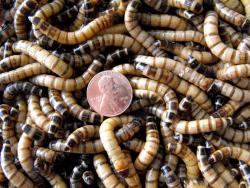

Additionally, the gut microbiota composed of diverse microbial species showed equal oxidation of PVC compared to C. The chemical structural changes were further investigated using X-ray photoelectron spectroscopy (XPS) and Fourier-transform-infrared (FTIR) spectroscopy, and it was confirmed that the oxidation of the PVC surface proceeded with the formation of carbonyl groups (C = O), and hydroxyl groups (−OH) by C. We analyzed the microbial degradation of the PVC surface using field emission scanning electron microscopy (FE-SEM) and energy-dispersive X-ray spectroscopy (EDS) and confirmed that the physical and chemical changes were caused by C. We also studied the biodegradability of PVC by the gut microbiota compared with C. koseri) isolated from the gut of the superworm, Zophobas atratus ( Z. Here, we present results on the physicochemical and structural studies of PVC by Citrobacter koseri ( C. Therefore, the biodegradation of PVC becomes very important. However, evidence of bacteria that afford efficient biodegradation of unplasticized, pure PVC film has yet to be reported. Degrading plastic waste using microorganisms is an effective and eco-friendly method. There is accordingly strong demand for the development of solutions and methods for environmental remediation. Polyvinyl chloride (PVC) is one of the widely used plastic products worldwide, and its accumulation in the natural environment has become a major global issue with regard to the environment and biotic health. 2School of Undergraduate Studies, College of Transdisciplinary Studies, Daegu Gyeongbuk Institute of Science and Technology (DGIST), Daegu, Republic of Korea.1Laboratory of Environmental Biotechnology, Department of Brain Sciences, Daegu Gyeongbuk Institute of Science and Technology (DGIST), Daegu, Republic of Korea.Indra Nyamjav 1, Yejin Jang 2, Ye Eun Lee 1 and Sukkyoo Lee 1*


 0 kommentar(er)
0 kommentar(er)
